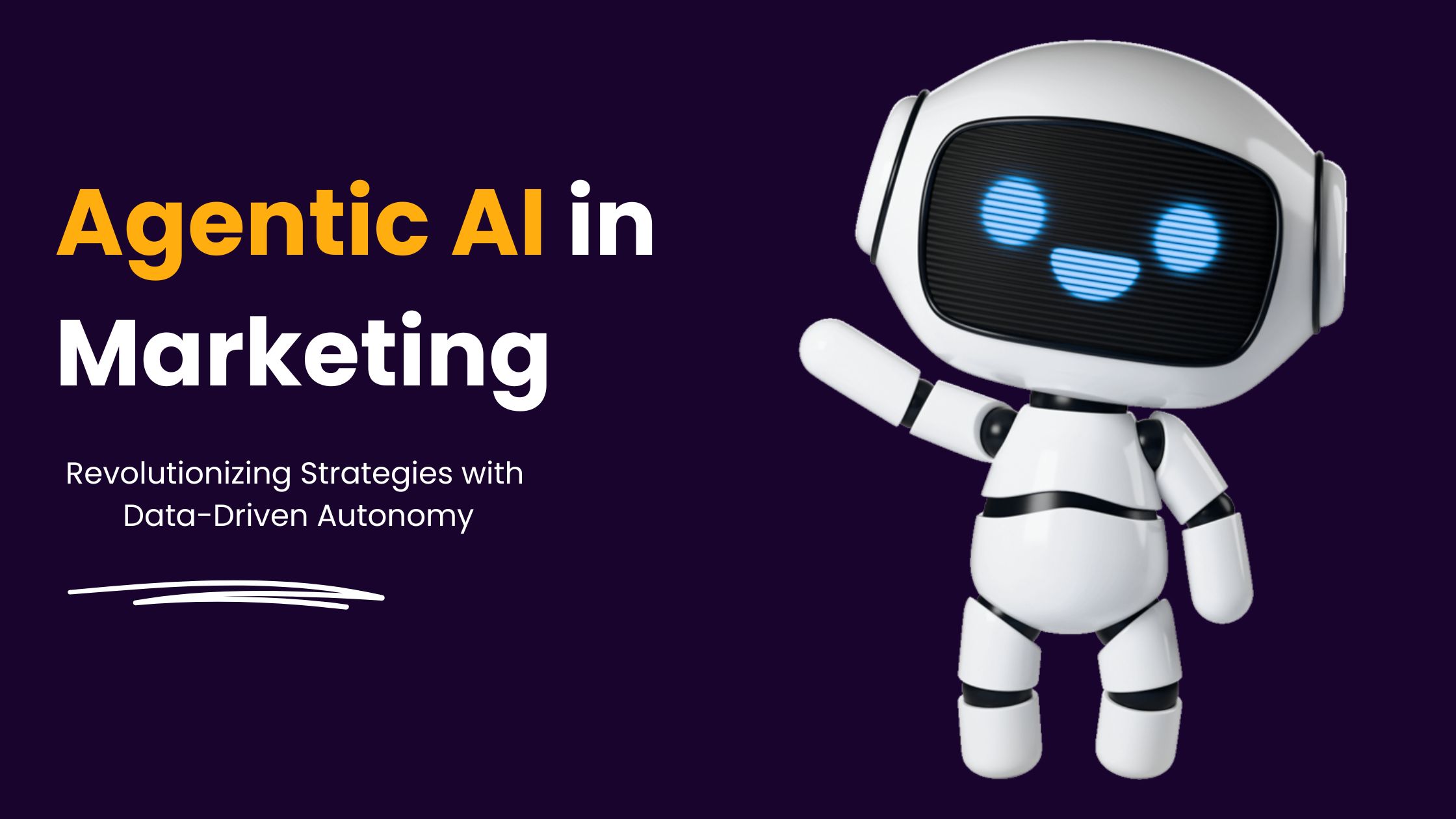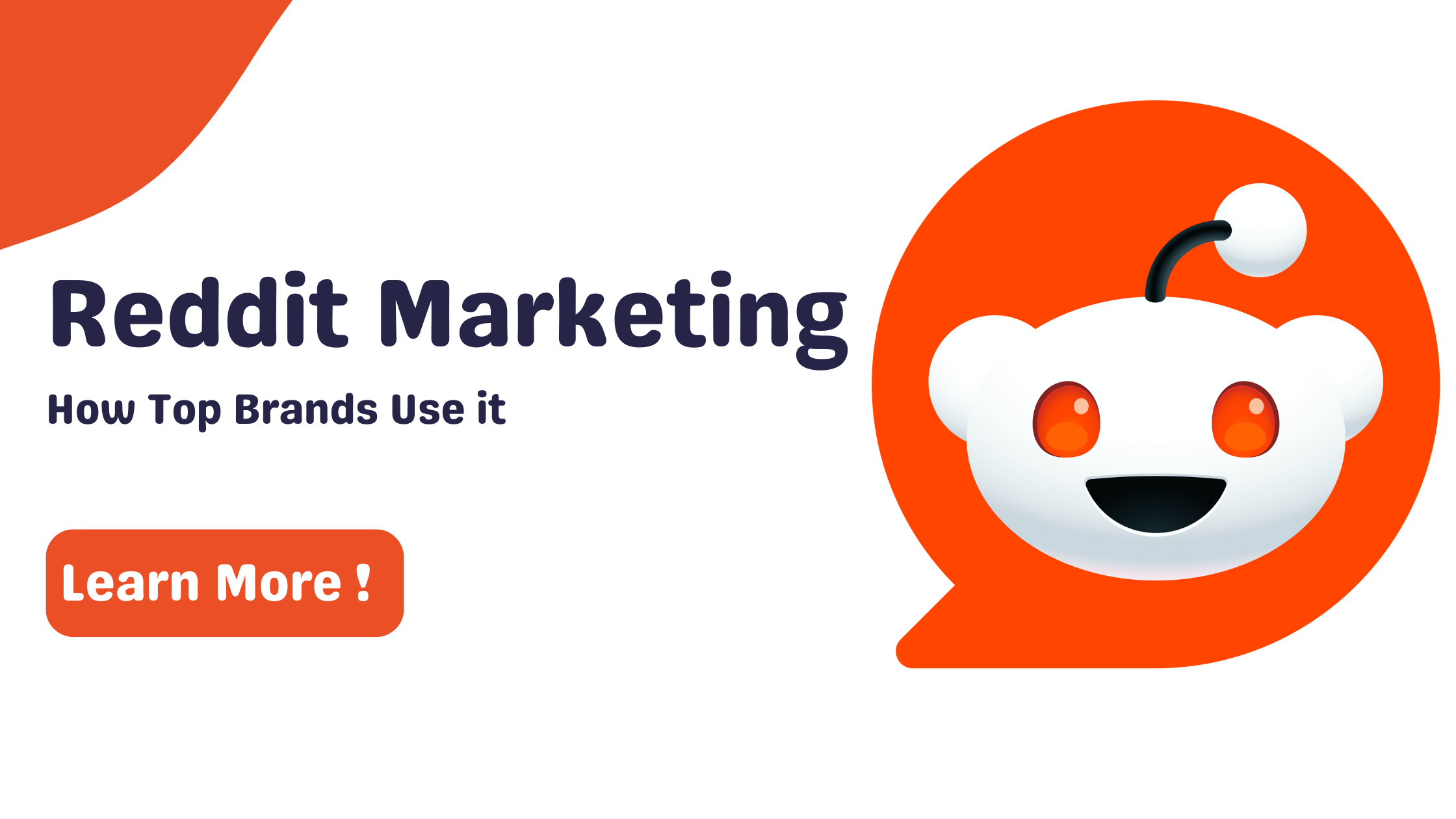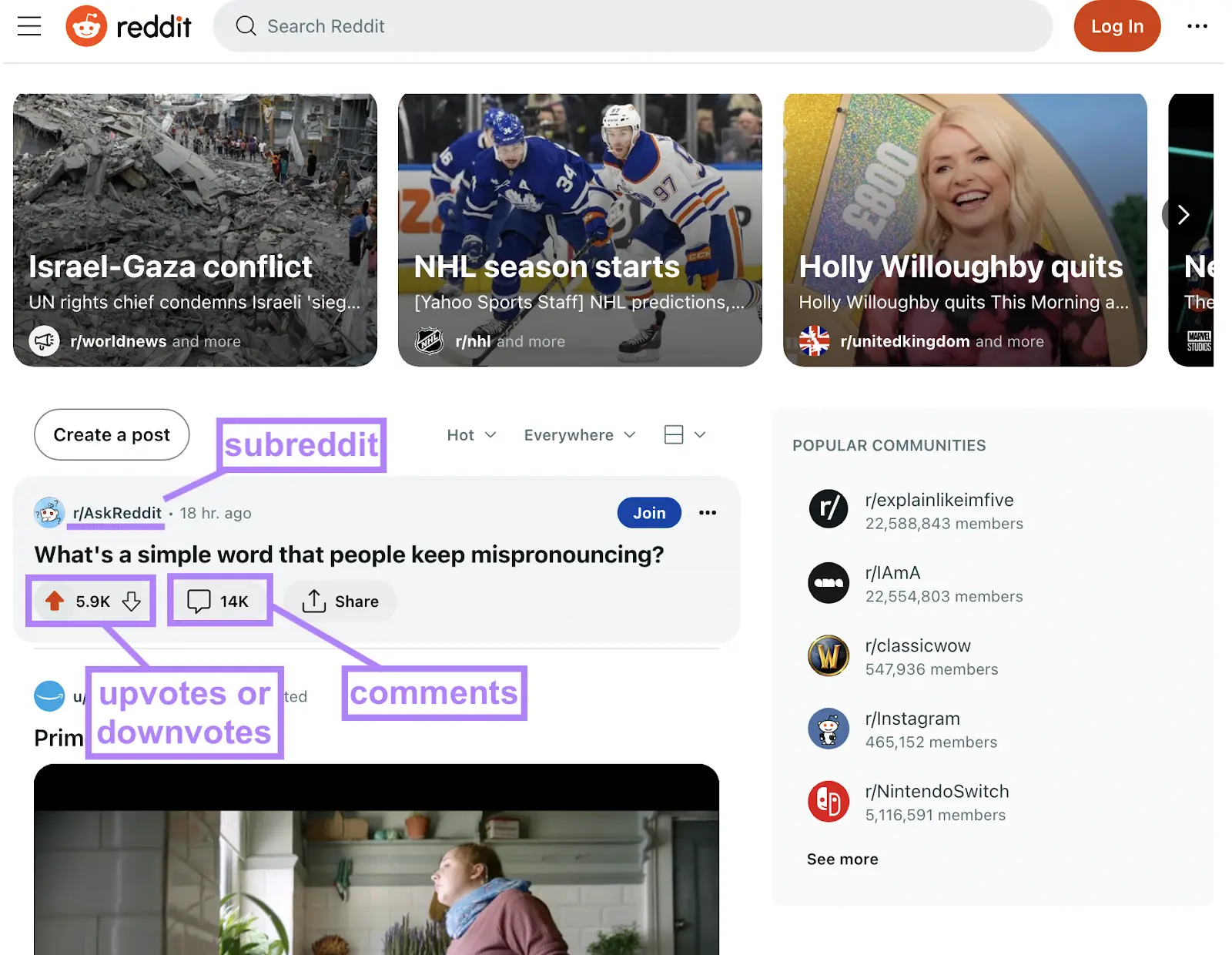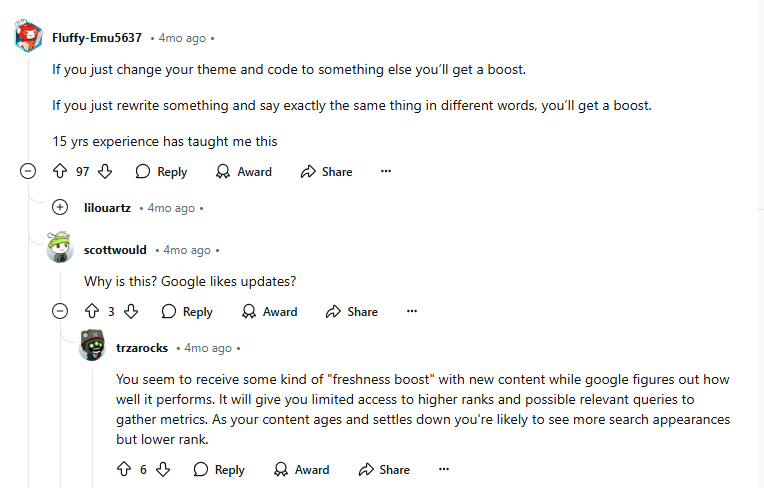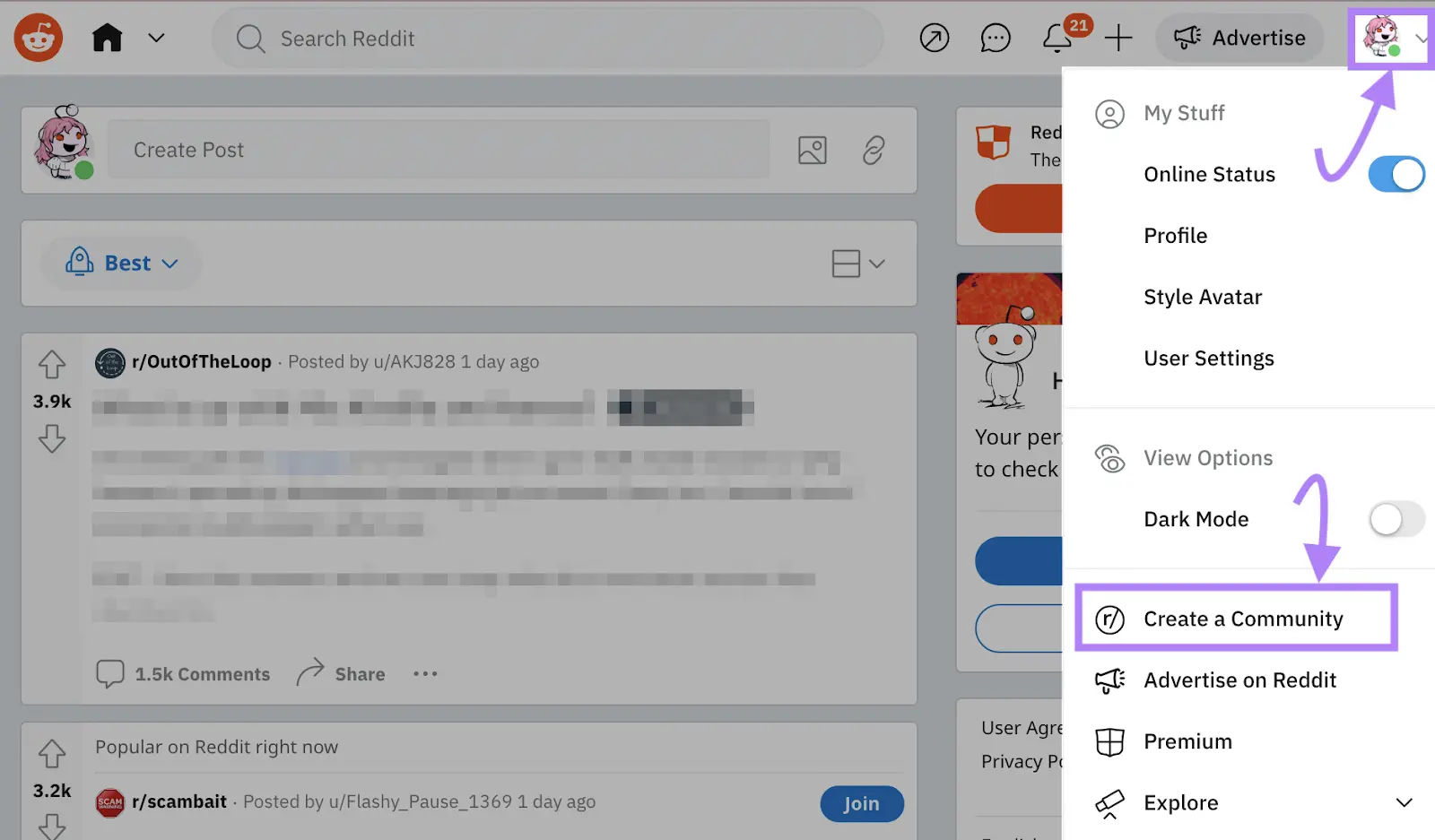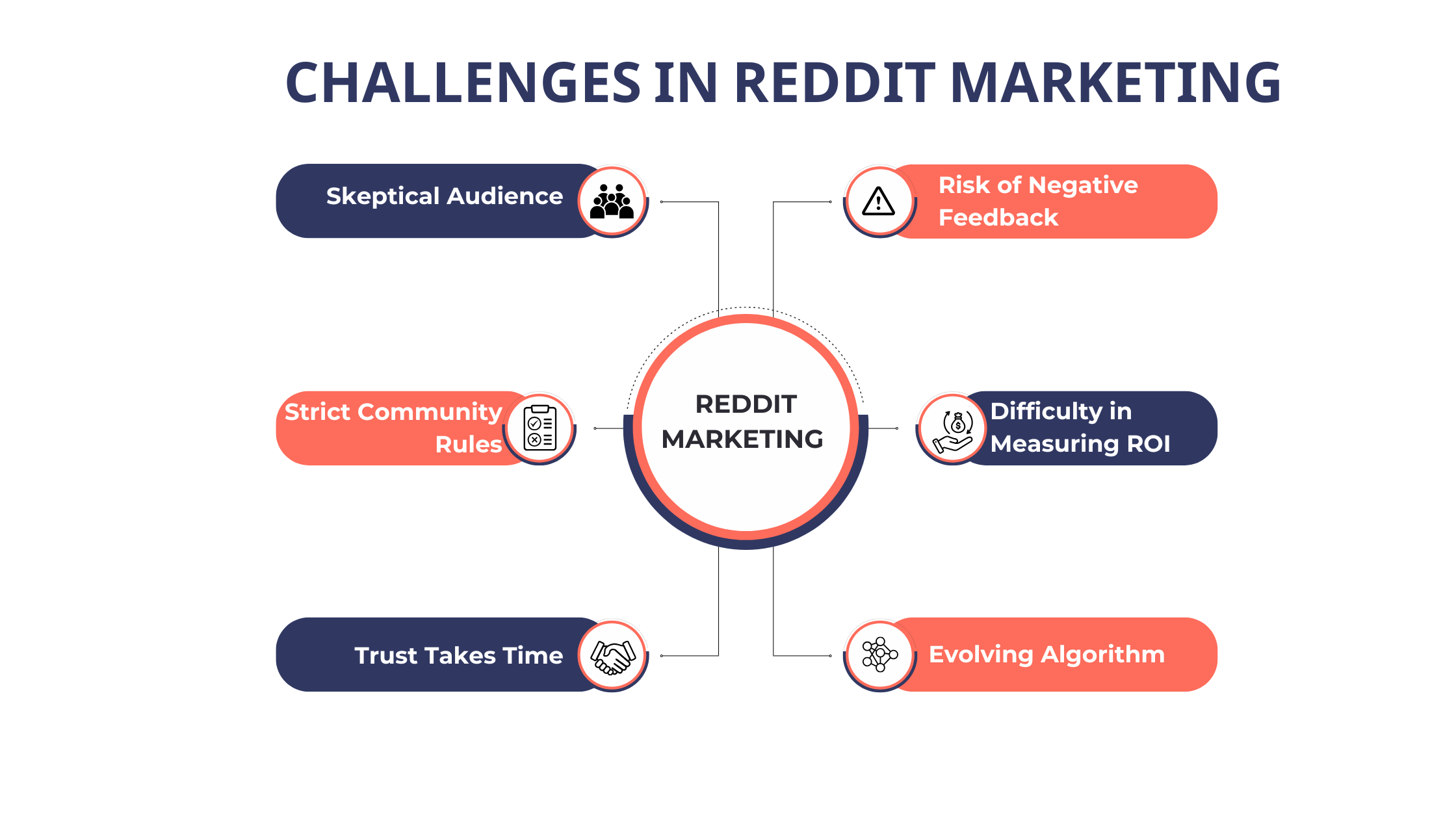The way users search and consume information online has changed dramatically. In 2024, 59.7% of searches in the EU and 58.5% in the US concluded without a single click, indicating users found immediate answers directly on the search results page. This shift has led to the emergence of zero-click marketing—strategies that deliver instant value where the audience is already engaged.
What is Zero-Click Marketing?
Zero-Click Marketing refers to digital strategies that provide value immediately — without requiring the user to click through to a website. It’s about delivering answers, insights, or experiences right where the user is: on Google’s SERP, on LinkedIn, in an Instagram carousel, or through a voice assistant.
Instead of driving organic traffic to a website, it focuses on providing instant answers or useful content directly on search engines or social media platforms.
For businesses, this shift presents both a challenge and an unprecedented opportunity.
Zero-click marketing embraces this shift by optimizing content for visibility and value on the platform itself.
Click-Based vs. Zero-Click Marketing
As user behavior shifts toward seeking immediate answers, zero-click marketing emerges as a strategic response—prioritizing visibility and value in-platform. Whereas traditional click-based strategies still rely on redirecting users to external sites.
Traditional click-based strategies focus on directing users to external websites, whereas zero-click marketing aims to provide immediate value within the platform, aligning with users’ preference for instant information.
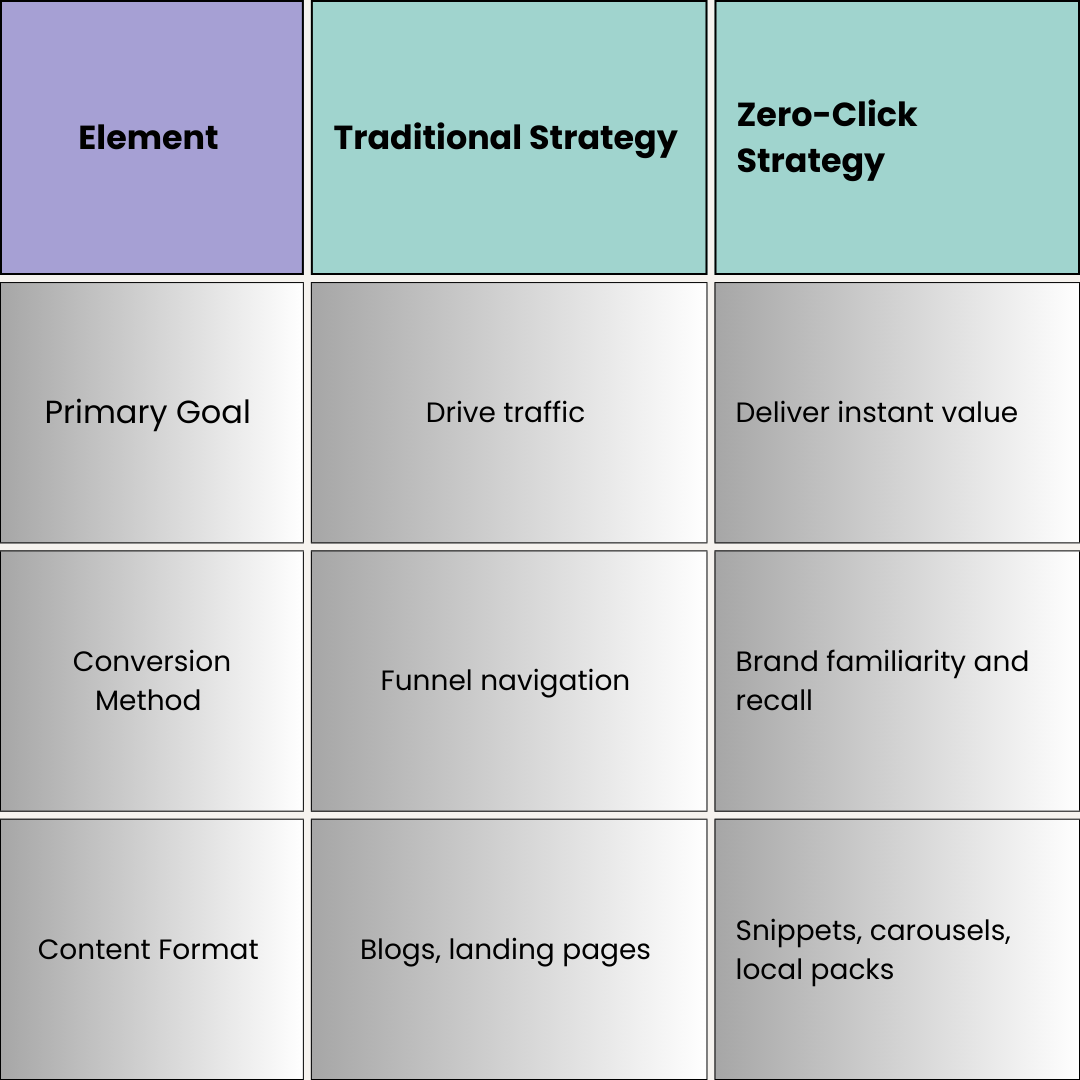
Rise Of Zero-Click Searches
The digital market has undergone a profound transformation in recent years, with zero-click searches emerging as a dominant force shaping how users interact with information online.
This phenomenon, driven by technological advancements and shifting consumer expectations, has redefined the rules of user engagement for businesses and marketers.
Whether it’s checking the weather, finding a quick definition, or comparing product prices, consumers want solutions delivered in the moment. This growing “zero-click” behavior marks a major turning point in digital marketing strategy.
A Shift in User Behavior
With the rise in mobile searches, voice assistants, and AI-generated SERP content, the demand for quick, clear answers has intensified.
The Role of Advanced Search Features
Key tools which fuel this trend:
Google’s AI Overview: Introduced in 2024, AI Overviews now appear in up to 47% of searches, offering summarized answers directly on the results page—further fueling the rise of zero-click interactions.
Microsoft Bing’s Copilot: Introduced in 2025, it offers conversational replies directly in results.
Featured Snippets and Knowledge Panels: Structured data powers instant info like how-tos or local details.
Social Media: Think Instagram Stories or LinkedIn posts that educate without linking out.
Voice search adds another layer, with devices like Amazon Alexa and Google Assistant delivering spoken responses that rarely prompt further exploration.
As a matter of fact, the number of voice assistant users in the U.S. is expected to hit 153.5 million in 2025.
Why Zero-Click Marketing Captivates Audiences?
Speed Meets Convenience
People want quick answers. Zero-click content gives information instantly, saving time and keeping users engaged.
Trust Through Relevance
When content matches what users are looking for, it builds trust. Showing value up front makes your brand more reliable.
The Psychology Factor
Humans are wired to favor the path of least resistance. Zero-click results satisfy curiosity with minimal effort, triggering a sense of satisfaction.
Strategies to Excel in a Zero-Click World
Structured Data and Schema Markup
Structured data enables search engines to understand your content better, powering features like rich snippets, FAQs, and knowledge panels.
Key Actions:
Identify the Right Schema Types: Use Schema.org to choose relevant markup types—like Article, Review, FAQ, or Product—based on your content.
Add FAQs to Service Pages: Boost chances of earning a FAQ rich result by adding FAQ Page markup to common question sections.
Use Plugins and Tools: For WordPress users, plugins like Rank Math or Yoast SEO simplify the process of adding schema.
Validate Regularly: Use Google’s Rich Results Test to ensure your structured data is implemented correctly.
Track Results in GSC: Monitor schema-driven enhancements like review snippets and FAQs using the “Enhancements” section in Google Search Console.
Keep It Updated: As content evolves, ensure your structured data reflects the latest information.
Optimize for Featured Snippets
Featured snippets dominate the top of the SERP, providing instant visibility and credibility.
Key Actions:
- Identify snippet-worthy queries using tools like SEMrush or Ahrefs.
- Format answers in short, precise blocks (40–60 words).
- Use bullet points, tables, or step lists for clarity.
Leverage Google Business Profile
Your Google Business Profile is a powerful zero-click asset, especially for local SEO and mobile-first users.
Key Actions:
- Keep NAP (Name, Address, Phone) consistent across platforms.
- Add updated photos, service categories, and operating hours.
- Encourage customer reviews and respond professionally.
Branded SERP Management
Branded searches (e.g., “YourCompany reviews,” “YourCompany pricing”) are high-intent and often resolved without a click. Managing how your brand appears on the SERP protects your reputation and strengthens trust.
Key Actions:
- Monitor branded keywords via tools like GSC or Ahrefs.
- Optimize top assets: website, social profiles, review sites, directories and press features.
- Ensure consistency across metadata, descriptions, and visuals.
- Watch for competitors bidding on your branded terms and act strategically.
Prioritize Voice Search Optimization
Voice queries are growing and often resolve without screen interaction, making voice search optimization vital in zero-click SEO.
![]()
Key Actions:
- Use natural, conversational language in FAQs and blog intros.
- Optimize for long-tail question-based keywords.
- Improve page speed and mobile friendliness to support voice SEO.
Create Evergreen, High-Value Content
In zero-click marketing, your content must deliver value without demanding clicks. Educational, evergreen content performs best.
Key Actions:
- Break complex topics into visual, digestible social media formats (carousels, reels, polls).
- Create standalone content blocks that answer questions immediately.
- Reuse high-impact content across multiple zero-click platforms (LinkedIn, Google, TikTok).
A quick view of essential zero-click tactics and their intended impact:
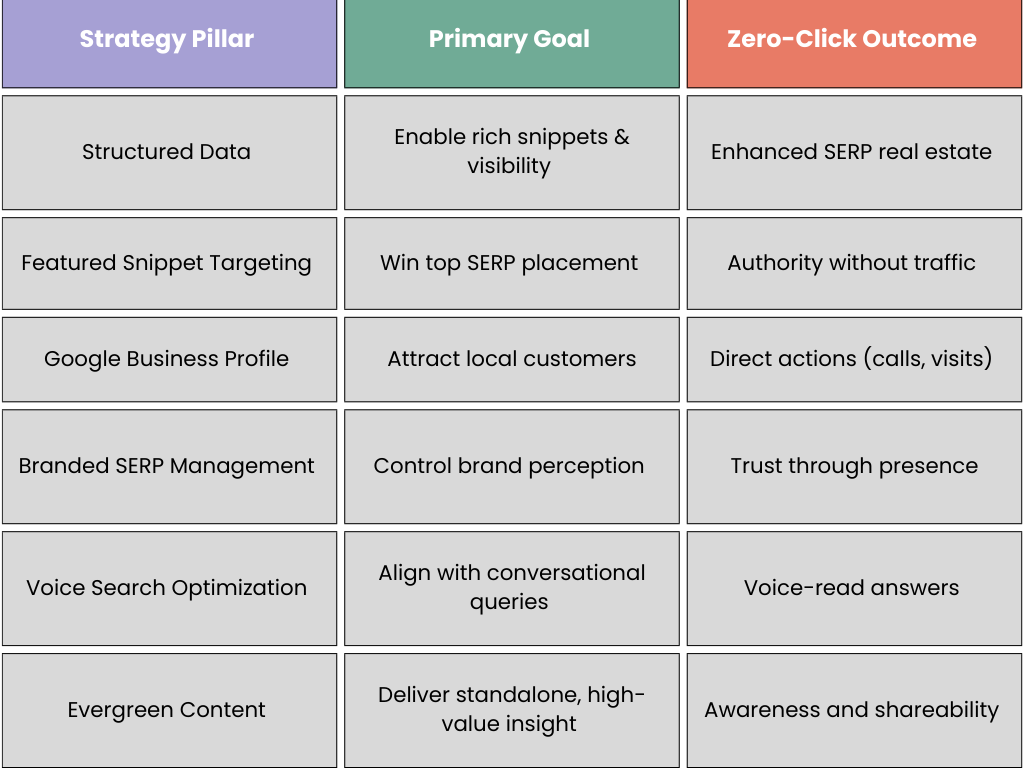
How Social Media Powers Zero-Click Marketing?
Social media is the perfect arena for zero-click strategies because:
- People scroll fast and often don’t want to leave the platform.
- Platforms (like LinkedIn, Instagram, X, and TikTok) prioritize content that keeps users on-platform.
- You can reach your audience repeatedly without making them take action.
Examples of Zero-Click Content on Social Media
- Twitter/X Threads that deliver entire lessons, tips, or stories—no blog post needed.
- Instagram Carousels that walk you through step-by-step guides, tips, or mini case studies.
- LinkedIn posts with rich insights, personal stories, or bite-sized strategies.
- TikTok/Reels that answer questions, solve problems, or share quick how-tos.
How to Measure Success Without Clicks?
In the age of Zero-Click Marketing, success isn’t about how many users land on your website—it’s about how visible, memorable, and engaging your brand is where it appears.
Performance isn’t measured by traditional click-through-rates (CTRs) alone. Instead, focus on visibility and engagement metrics:
The table highlights key metrics and their relevance in tracking zero-click marketing success:
| Metric | Relevance in Zero-Click Marketing | What It Tells You |
| SERP Feature Appearances | High | Your content is visible in featured snippets or PAA (people also ask) boxes. |
| Impressions | High | Reflects how often your brand appears in search or feeds. |
| Branded Search Volume | Growing brand awareness | Indicates increased brand recall and direct interest. |
| Time on Platform (Social) | Native engagement | Shows how well your content retains attention in-feed. |
| Voice Search Responses | Emerging metric | Highlights content optimized for spoken queries. |
| Traditional Click-Through | Less relevant | Clicks matter less when users get value without leaving. |
Common Misconceptions
Zero-click means zero results.
In reality, zero-click enhances top-of-funnel engagement, helping you build visibility and trust at scale.
It replaces SEO.
Zero-click approaches complement SEO strategy by focusing on different stages of the customer journey.
It’s only for big brands.
Small and medium businesses can rank in snippets, voice search, and social algorithms with the right content and formatting.
Conclusion
The focus is no longer solely on driving traffic, but on being present, relevant, and trusted where the audience is most active. From optimizing for featured snippets to crafting platform-native content, businesses must embrace visibility over volume.
In the zero-click era, visibility is everything. Woosper helps businesses like yours capture attention, deliver value, and stay top-of-mind—right on the results page. Position your brand for the zero-click era—speak with our experts today.



